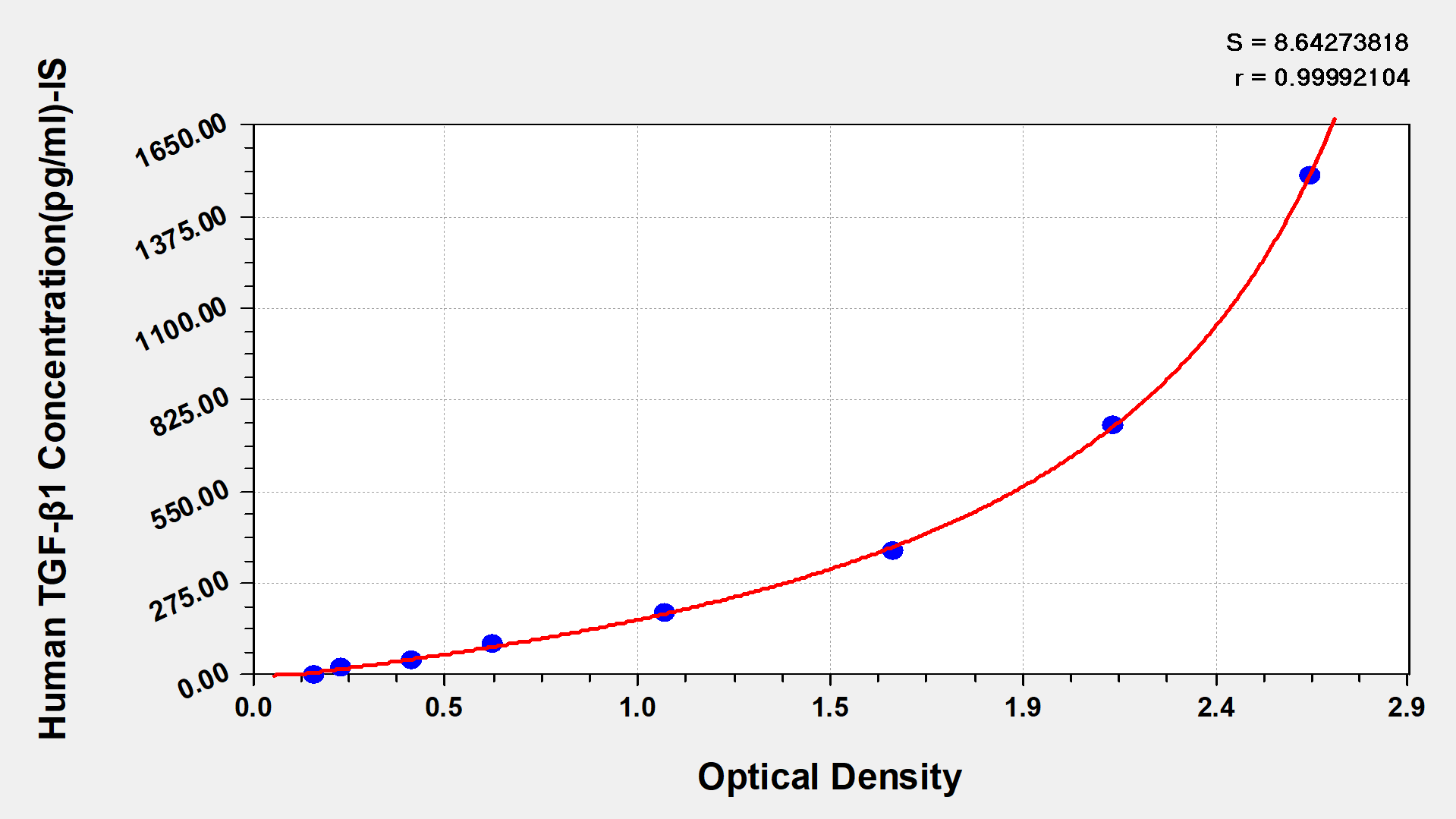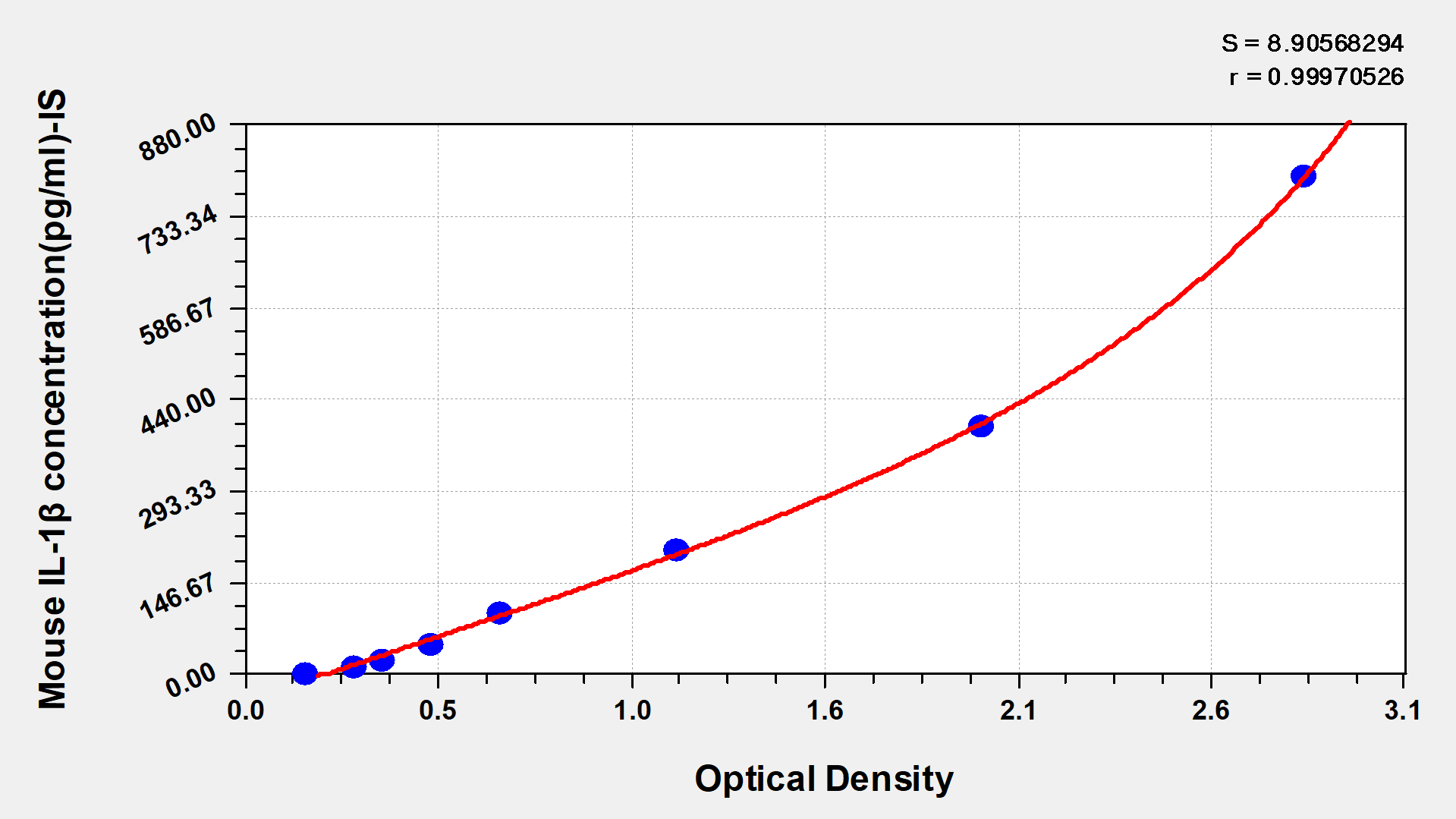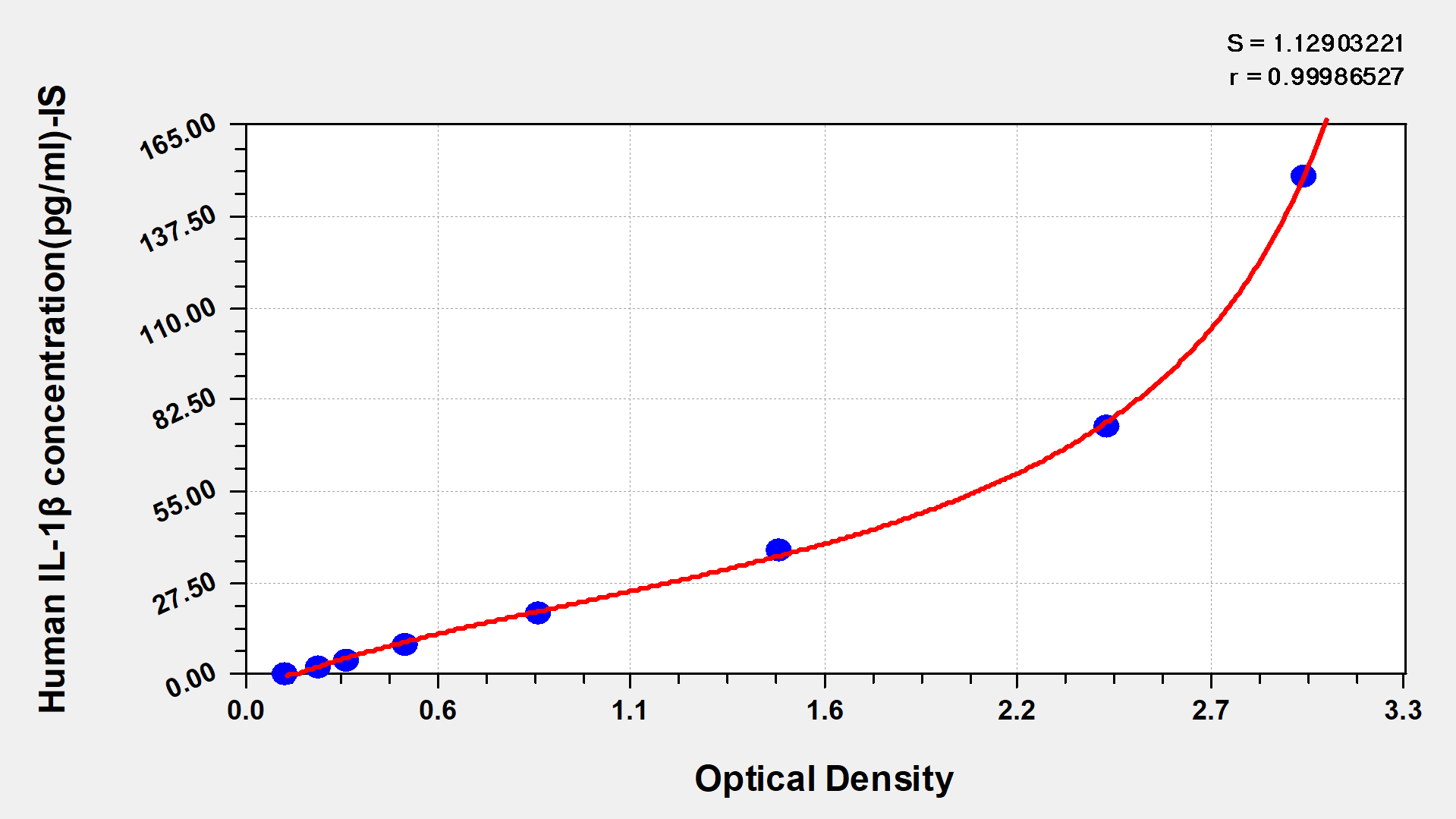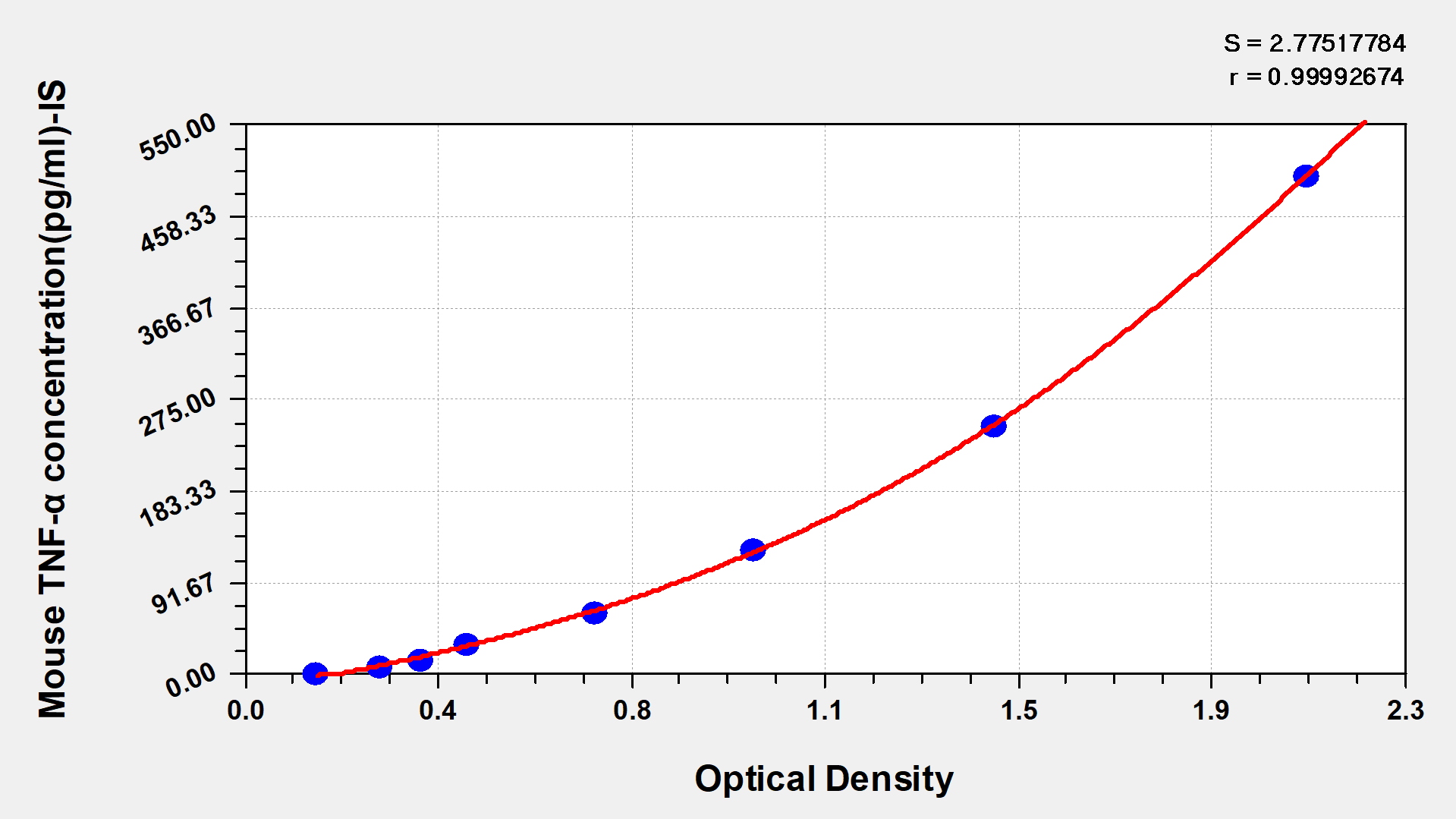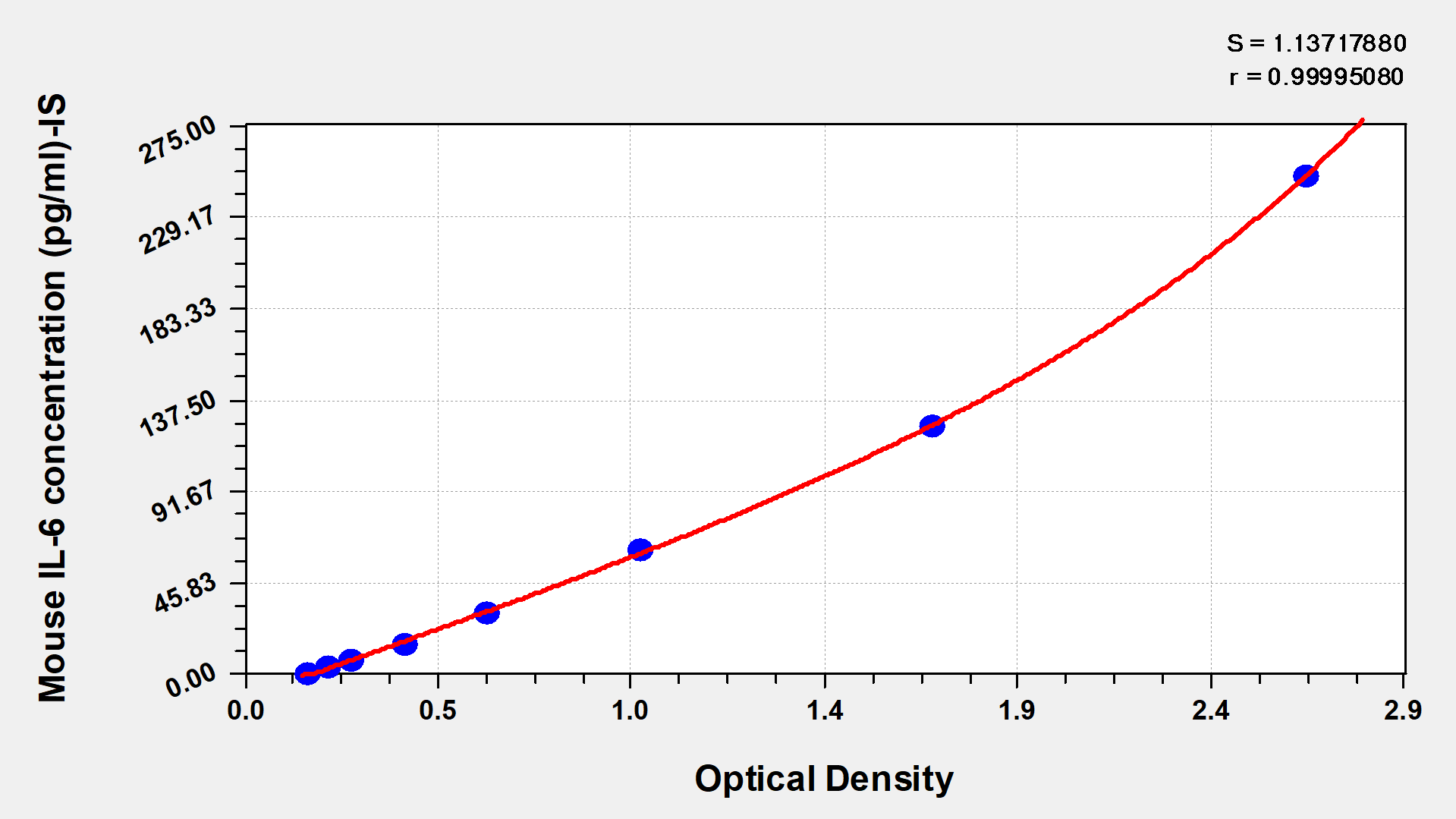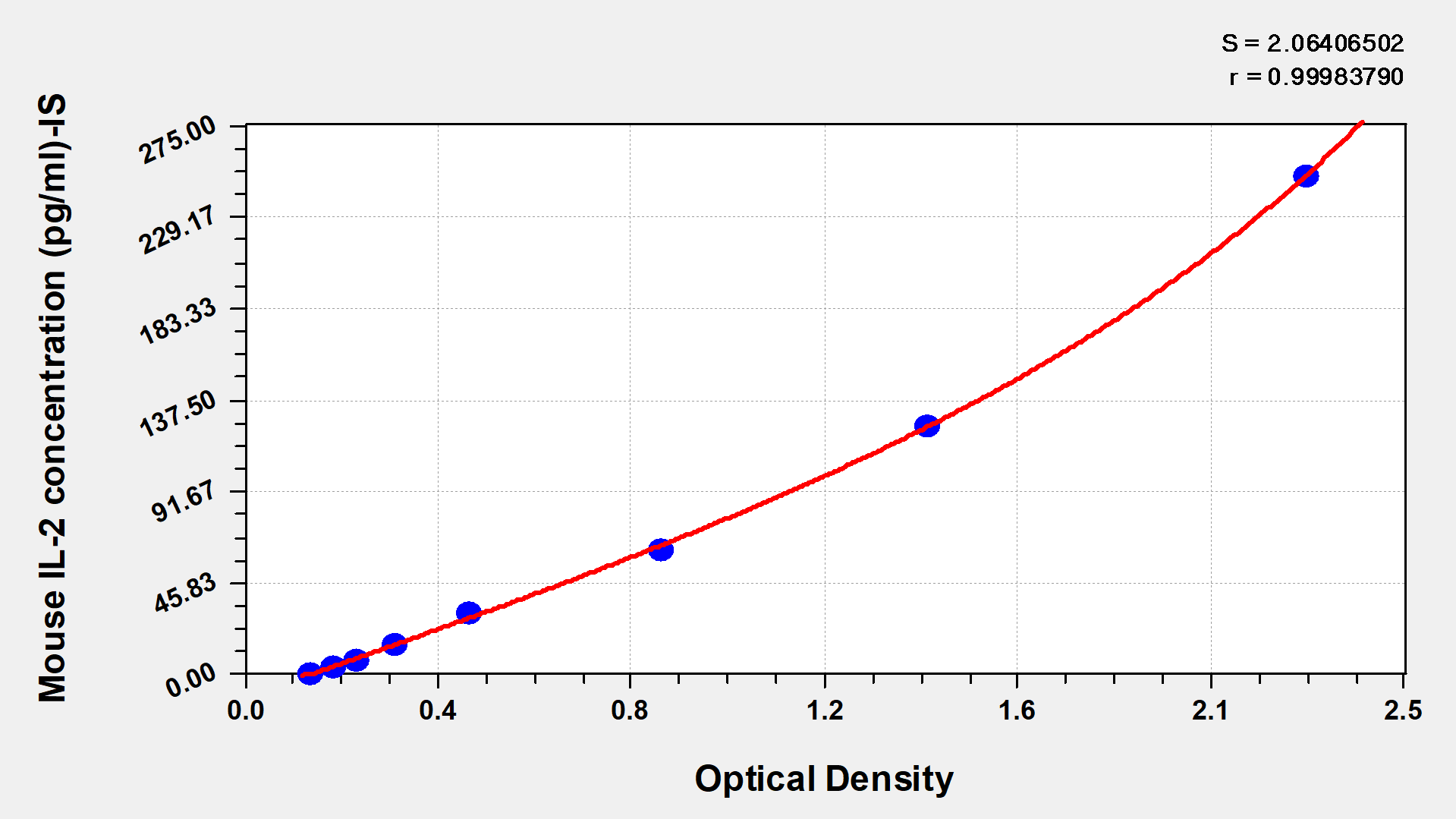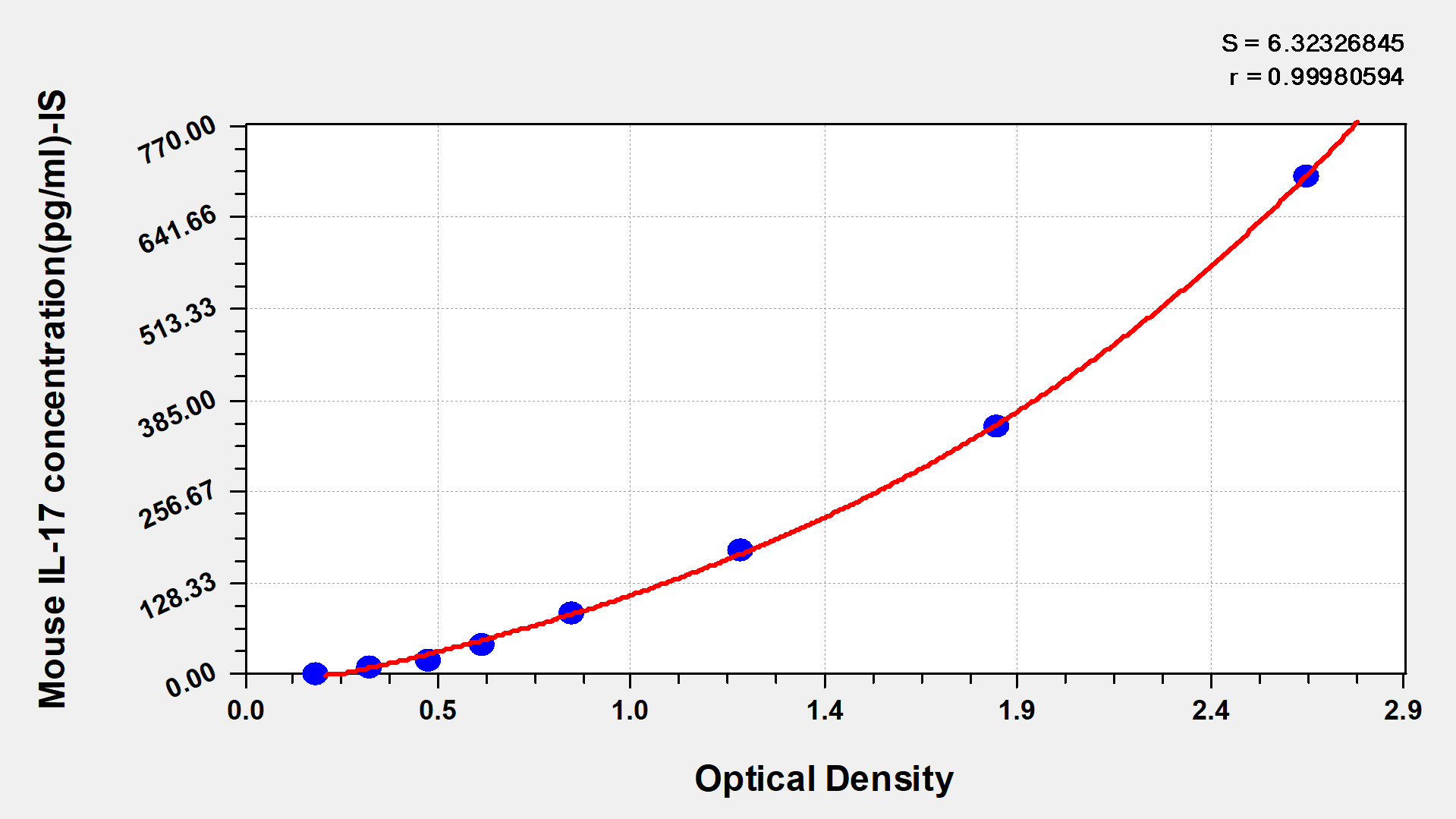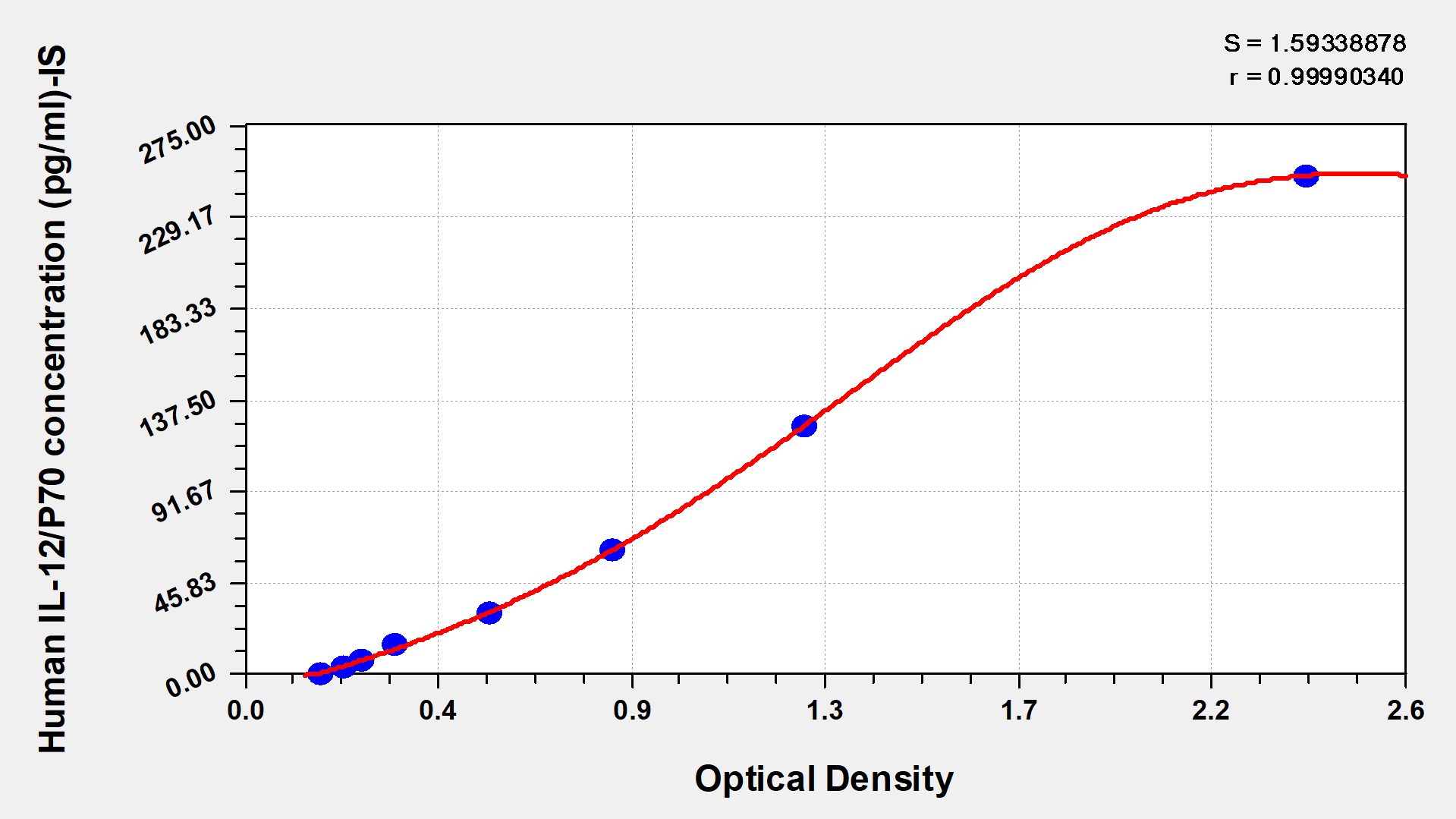-
中文名稱:小鼠心鈉肽(ANP)酶聯免疫試劑盒
-
貨號:CSB-E04848m
-
規格:96T/48T
-
價格:¥3800/¥2500
-
其他:
產品詳情
-
產品描述:小鼠心鈉肽(ANP)酶聯免疫試劑盒(CSB-E04848m)為雙抗夾心法ELISA試劑盒,定量檢測血清、血漿樣本中的NPPA含量。NPPA 即心鈉肽前體 A。它在心血管系統中發揮重要作用,能調節血壓、血容量等。研究機制上主要圍繞其基因表達調控以及生成的利鈉肽生理功能開展,探究其在心臟生理與病理過程中的角色,為心血管疾病防治提供新思路。試劑盒檢測范圍為0.312 ng/mL-20 ng/mL,本試劑盒適用于小鼠模型中ANP水平變化的動態監測,例如心臟負荷實驗、高血壓模型評估或心臟功能相關的基礎研究。可應用于心血管疾病機制探索、藥物干預效果評價等實驗場景,為動物模型中心功能相關指標提供定量化數據支持。本品僅用于科研,不用于臨床診斷,產品具體參數及操作步驟詳見產品說明書。
-
別名:Nppa ELISA Kit; PndNatriuretic peptides A ELISA Kit; Prepronatriodilatin) [Cleaved into: Atrial natriuretic factor ELISA Kit; ANF ELISA Kit; Atrial natriuretic peptide ELISA Kit; ANP); Auriculin-B; Auriculin-A; Atriopeptin-1 ELISA Kit; Atriopeptin I); Atriopeptin-2 ELISA Kit; Atriopeptin II)] ELISA Kit
-
縮寫:
-
Uniprot No.:
-
種屬:Mus musculus (Mouse)
-
樣本類型:serum, plasma
-
檢測范圍:0.312 ng/mL-20 ng/mL
-
靈敏度:0.078 ng/mL
-
反應時間:1-5h
-
樣本體積:50-100ul
-
檢測波長:450 nm
-
研究領域:Cardiovascular
-
測定原理:quantitative
-
測定方法:Sandwich
-
精密度:
Intra-assay Precision (Precision within an assay): CV%<8% Three samples of known concentration were tested twenty times on one plate to assess. Inter-assay Precision (Precision between assays): CV%<10% Three samples of known concentration were tested in twenty assays to assess. -
線性度:
To assess the linearity of the assay, samples were spiked with high concentrations of mouse ANP in various matrices and diluted with the Sample Diluent to produce samples with values within the dynamic range of the assay. Sample Serum(n=4) 1:1 Average % 98 Range % 91-102 1:2 Average % 107 Range % 98-111 1:4 Average % 92 Range % 84-96 1:8 Average % 99 Range % 93-102 -
回收率:
The recovery of mouse ANP spiked to levels throughout the range of the assay in various matrices was evaluated. Samples were diluted prior to assay as directed in the Sample Preparation section. Sample Type Average % Recovery Range Serum (n=5) 91 84-97 EDTA plasma (n=4) 92 88-97 -
標準曲線:
These standard curves are provided for demonstration only. A standard curve should be generated for each set of samples assayed. 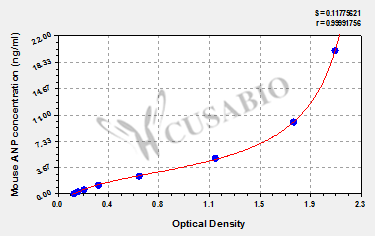
ng/ml OD1 OD2 Average Corrected 20 2.045 2.105 2.075 1.944 10 1.743 1.794 1.769 1.638 5 1.167 1.199 1.183 1.052 2.5 0.608 0.627 0.618 0.487 1.25 0.309 0.314 0.312 0.181 0.625 0.201 0.213 0.207 0.076 0.312 0.165 0.161 0.163 0.032 0 0.133 0.129 0.131 -
數據處理:
-
貨期:3-5 working days
引用文獻
- Deletion of PIEZO1 in adult cardiomyocytes accelerates cardiac aging and causes premature death B Martinac, MP Feneley, PS Macdonald, ZY Yu,bioRxiv,2025
- Loss of atrial natriuretic peptide signaling causes insulin resistance, mitochondrial dysfunction, and low endurance capacity D Carper, M Lac, M Coue, A Labour, A M?rtens,Science Advances,2024
- Cellular Membrane‐Engineered Nanovesicles as Three‐Stage Booster to Target Lesion Core F Huang,Advanced materials,2023
- Atrial natriuretic peptide orchestrates a coordinated physiological response to fuel non shivering thermogenesis Carper D, et al,Biorxiv,2019
相關產品
靶點詳情
-
功能:Hormone that plays a key role in mediating cardio-renal homeostasis, and is involved in vascular remodeling and regulating energy metabolism. Acts by specifically binding and stimulating NPR1 to produce cGMP, which in turn activates effector proteins, such as PRKG1, that drive various biological responses. Regulates vasodilation, natriuresis, diuresis and aldosterone synthesis and is therefore essential for regulating blood pressure, controlling the extracellular fluid volume and maintaining the fluid-electrolyte balance. Also involved in inhibiting cardiac remodeling and cardiac hypertrophy by inducing cardiomyocyte apoptosis and attenuating the growth of cardiomyocytes and fibroblasts. Plays a role in female pregnancy by promoting trophoblast invasion and spiral artery remodeling in uterus, and thus prevents pregnancy-induced hypertension. In adipose tissue, acts in various cGMP- and PKG-dependent pathways to regulate lipid metabolism and energy homeostasis. This includes upregulating lipid metabolism and mitochondrial oxygen utilization by activating the AMP-activated protein kinase (AMPK), and increasing energy expenditure by acting via MAPK11 to promote the UCP1-dependent thermogenesis of brown adipose tissue. Binds the clearance receptor NPR3 which removes the hormone from circulation.; May have a role in cardio-renal homeostasis through regulation of natriuresis, diuresis, vasodilation, and inhibiting aldosterone synthesis. In vitro, promotes the production of cGMP and induces vasodilation. May promote natriuresis, at least in part, by enhancing prostaglandin E2 synthesis resulting in the inhibition of renal Na+-K+-ATPase. However reports on the involvement of this peptide in mammal blood volume and blood pressure homeostasis are conflicting; according to a report, in vivo it is not sufficient to activate cGMP and does not inhibit collecting duct transport nor effect diuresis and natriuresis. Appears to bind to specific receptors that are distinct from the receptors bound by atrial natriuretic peptide and vessel dilator. Possibly enhances protein excretion in urine by decreasing proximal tubular protein reabsorption.; May have a role in cardio-renal homeostasis through regulation of natriuresis, diuresis, and vasodilation. In vitro, promotes the production of cGMP and induces vasodilation. May promote natriuresis, at least in part, by enhancing prostaglandin E2 synthesis resulting in the inhibition of renal Na+-K+-ATPase. However reports on the involvement of this peptide in mammal blood volume and blood pressure homeostasis are conflicting; according to a report it is not sufficient to activate cGMP and does not inhibit collecting duct transport nor effect diuresis and natriuresis. Appears to bind to specific receptors that are distinct from the receptors bound by the atrial natriuretic and long-acting natriuretic peptides. Possibly functions in protein excretion in urine by maintaining the integrity of the proximal tubules and enhancing protein excretion by decreasing proximal tubular protein reabsorption.; May have a role in cardio-renal homeostasis through regulation of diuresis and inhibiting aldosterone synthesis. In vitro, promotes the production of cGMP and induces vasodilation. May promote natriuresis, at least in part, by enhancing prostaglandin E2 synthesis resulting in the inhibition of renal Na+-K+-ATPase. May have a role in potassium excretion but not sodium excretion (natriuresis). Possibly enhances protein excretion in urine by decreasing proximal tubular protein reabsorption.; Hormone produced in the kidneys that appears to be important for maintaining cardio-renal homeostasis. Mediates vasodilation, natriuresis and diuresis primarily in the renal system, in order to maintain the extracellular fluid volume and control the fluid-electrolyte balance. Specifically binds and stimulates cGMP production by renal transmembrane receptors, likely NPR1. Urodilatin not ANP, may be the natriuretic peptide responsible for the regulation of sodium and water homeostasis in the kidney.; May have a role in cardio-renal homeostasis through regulation of natriuresis and vasodilation. In vivo promotes natriuresis and in vitro, vasodilates renal artery strips.; May have a role in cardio-renal homeostasis through regulation of natriuresis and vasodilation. In vivo promotes natriuresis and in vitro, vasodilates renal artery strips.; May have a role in cardio-renal homeostasis through regulation of regulation of natriuresis and vasodilation. In vivo promotes natriuresis. In vitro, vasodilates intestinal smooth muscle but not smooth muscle strips.; May have a role in cardio-renal homeostasis through regulation of natriuresis and vasodilation. In vivo promotes natriuresis. In vitro, selectively vasodilates intestinal and vascular smooth muscle strips.; May have a role in cardio-renal homeostasis through regulation of natriuresis and vasodilation. In vivo promotes natriuresis. In vitro, selectively vasodilates intestinal smooth muscle but not vascular smooth muscle strips.
-
基因功能參考文獻:
- data demonstrate that gestational hypertension and lack of maternal ANP did not significantly impact the progression and regression of pregnancy-induced cardiac hypertrophy over gestation and postpartum in ANP(+/-) offspring. PMID: 29802597
- The present study provides a novel insight into the potential underlying mechanisms of telmisartan-induced inhibition of cardiomyocyte hypertrophy, which involves inhibition of NFAT activation, nuclear translocation and the ANP/BNP cascade. PMID: 28447738
- the developmental regulation and stress response of the Nppa-Nppb cluster involve the concerted action of multiple enhancers and epigenetic changes distributed across a structurally rigid regulatory domain. PMID: 27048739
- we investigated pregnancies of ANP wild type, heterozygous, and knockout mice. Maternal blood pressure did not differ between genotypes, and fetal weight was unaffected. Placental weight was greater in ANP(-/-) versus ANP(+/+) mice. Therefore, in our hands, the ANP model does not express phenotypic features of preeclampsia with fetal growth restriction. PMID: 27238710
- Data (including data from studies in knockout mice) suggest expression of ANP/BNP/GC-A (atrial natriuretic peptide, brain natriuretic peptide, and guanylyl cyclase-A) is important in embryonic neovascularization and organogenesis. PMID: 26517044
- Goalpha plays a role in ANF sorting during intracellular vectorial transport and with the presence of a mechanism that preserves the molar relationship between cellular ANF and BNP. PMID: 25917834
- ANP prevents cancer metastasis by inhibiting the adhesion of tumor cells to inflamed endothelial cells PMID: 25775533
- Expression of NPPA splice variants is differentially regulated in the developing mouse heart. PMID: 25260157
- NPPA acts on the NPR1 receptor, is expressed in mouse dorsal root and trigeminal ganglia, and the spinal cord. PMID: 25123163
- Natriuretic peptides buffer renin-dependent hypertension. PMID: 24717731
- Data indicate that the identified stress-responsive enhancer of Nppa and Nppb, the most common markers of heart failure, is a 650-bp fragment within 50 kb of the Nppa and Nppb loci. PMID: 24391132
- Absence of maternal atrial natriuretic peptide leads to gestational hypertension and adaptive changes fetal cardiac growth and blood pressure regulation. PMID: 23981445
- This study investigated a novel mechanism of vascular barrier protection by ANP via modulation of GEF-H1 function. PMID: 24352660
- Data indicate that NRG-1beta up-regulated the gene expressions of Nkx2.5, GATA4, alpha-actin, MLC-2v, and ANF in a time-dependent regulation of ErbB/ERK1/2 pathways. PMID: 23606057
- Atrial natriuretic peptide suppresses Th17 development through regulation of cGMP-dependent protein kinase and PI3K-AKT signaling pathways. PMID: 23327998
- there is a gut-heart GLP-1R-dependent and ANP-dependent axis that regulates blood pressure and involves Epac2 PMID: 23542788
- Characterize an estradiol-regulated interaction of NPPA with ERalpha in cardiomyocytes. PMID: 22962310
- Data show that KO/TgV mice had significantly higher levels of proatrial natriuretic peptide in the heart compared with that in control KO/TgWT mice, indicating that the corin variant was defective in processing natriuretic peptides in vivo. PMID: 22987923
- PDE5 inhibition did not alter atrial natriuretic peptide-stimulated cGMP in the resting heart but augmented it in the transaortic constriction heart. PMID: 22829024
- Data suggest that Western diets (i.e., diets high in saturated fat and or salt) up-regulate expression of ANP in cardiomyocytes and increase its serum level. PMID: 21499941
- Data suggest that a NPPA gradient originating in the oviduct induces sperm chemotaxis by binding to its receptor NPR1 and then activating PKG pathway, and plays a physiological role in fertilization. PMID: 21809340
- Nkx2-5 and its responsive cis-regulatory DNA elements are essential for Atrial natriuretic factor expression selectively in the developing heart. PMID: 21930795
- These results strongly suggest a protective role of ANP in the in vitro and in vivo models of ALI associated with gram-positive infection. PMID: 21051573
- Atrial natriuretic peptide did not localize to uterine natural killer cells at gestational days 6 or 8, but did colocalize to uNK cells at gd10 and 12. PMID: 20959647
- direct myocardial role for ANP/GC-A/cGMP to antagonize the Ca(2+) (i)-dependent hypertrophic growth response to Ang II, but not to beta-adrenergic stimulation PMID: 20352235
- results suggest that particulate matter and O3 exposures, alone and combined, lead to different cardiac functional changes, and these unique changes are age-specific and dependent on Nppa and Npr1 genes PMID: 20540624
- Upregulation of ANP mRNA in the kidney and heart of eNOS knockout mice PMID: 20403400
- cGKIbeta signaling via IRAG is essential for regulation of smooth muscle tone and of intracellular calcium by NO and by atrial natriuretic peptide. PMID: 20080989
- The ANP/NPR-A signaling pathway is upregulated in streptozotocin-induced diabetic mice, and contributes to the development of diabetic gastroparesis. PMID: 20039448
- ANP-mediated increases in distal sodium delivery alone exert modest effects on sodium excretion PMID: 19906950
- The upregulation of left ventricular atrial natriuretic peptide (ANP) serves as a molecular marker of cardiac hypertrophy. PMID: 11821706
- Processing of pro-atrial natriuretic peptide by corin in cardiac myocytes. PMID: 11884416
- Cooperative action of Tbx2 and Nkx2.5 inhibits ANF expression in the atrioventricular canal thus suppressing myocardial chamber formation PMID: 12023302
- ANP acts as an anti-permeability factor by inhibiting the signaling functions of vascular permeability factor and by preserving the endothelial cell tight junctions functional morphology PMID: 12213803
- HAND2 is an upstream transcriptional regulator of ANP expression PMID: 12392994
- Data suggest that stretching and endothelin-1 are important stimuli to atrial natriuretic peptide (ANP) secretion from mouse atria, and the responsiveness of the ANP system to those stimuli are not coupled to the pathway involving heat shock protein 70. PMID: 12563028
- Isoforms of PITX2 specifically regulate expression and repression of this factor, synergistically with Nkx2.5 PMID: 12692125
- Effects of pressure overload on extracellular matrix expression in the heart of the atrial natriuretic peptide-null mouse. PMID: 12756220
- Jumonji may play important roles in the down-regulation of ANF gene expression and in heart development PMID: 15542826
- IL-18 induces cardiomyocyte hypertrophy via PI3K-dependent signaling, mediates ANF gene transcription, and has a role in inflammatory heart diseases including heart failure PMID: 15574430
- data establish corin as the physiological pro-ANP convertase and indicate that corin deficiency may contribute to hypertensive heart disease (pro-ANP convertase corin) PMID: 15637153
- local ANP/GC-A/cyclic GMP signaling counter-regulates MAPK/ERK- and calcineurin/nuclear factor of activated T cells-dependent pathways of cardiac myocyte growth in hypertensive eNOS-/- mice PMID: 15793309
- activation of cardiac GC-A by locally secreted atrial and brain natriuretic peptides protects the heart from excessive cardiac remodeling by inhibiting the calcineurin-NFAT pathway. PMID: 15939815
- high salt was able to increase plasma ANP levels and ventricular mRNA expression of ANP suggesting that ANP is an important determinant of the degree of salt-sensitivity observed in the proANP gene-disrupted animal PMID: 16132693
- Loss of Hey1/2 leads to elevated GATA4/6 and ANF mRNA levels in embryoid bodies, while forced expression of Hey factors strongly represses expression of the GATA4 and GATA6 promoter. PMID: 16199874
- The salt-sensitive hypertension in the ANP+/- mouse is exacerbatted,and possibly driven by the vasoconstrictive effects resulting from an upregulated endothelin-1/endothelin A receptor pathway. PMID: 16335784
- ANP and AT1 receptor blockade attenuate angiotensin II-induced renomedullary interstitial cells proliferation and extracellular matrix synthesis more efficiently in the absence of neutral endopeptidase. PMID: 16582578
- Results confirm the important role of ANP in the modulation of sympathetic nerve activity and its contribution to blood pressure homeostasis. PMID: 17482290
- A significant increase in plasma oxytocin level was observed at 5 and 20 min after each central stimulation. PMID: 17524563
- phosphorylation of Smad3 by protein kinase G is a potential molecular mechanism by which activation of ANP/cGMP/protein kinase G signaling disrupts TGF-beta1-induced nuclear translocation of pSmad3 and downstream events PMID: 17991884
顯示更多
收起更多
-
亞細胞定位:[Long-acting natriuretic peptide]: Secreted.; [Vessel dilator]: Secreted.; [Kaliuretic peptide]: Secreted.; [Urodilatin]: Secreted.; [Atrial natriuretic peptide]: Secreted. Perikaryon. Cell projection.; [Atriopeptin-3]: Secreted.
-
蛋白家族:Natriuretic peptide family
-
數據庫鏈接:
Most popular with customers
-
Human Transforming Growth factor β1,TGF-β1 ELISA kit
Detect Range: 23.5 pg/ml-1500 pg/ml
Sensitivity: 5.8 pg/ml
-
-
-
Mouse Tumor necrosis factor α,TNF-α ELISA Kit
Detect Range: 7.8 pg/ml-500 pg/ml
Sensitivity: 1.95 pg/ml
-
-
-
-



